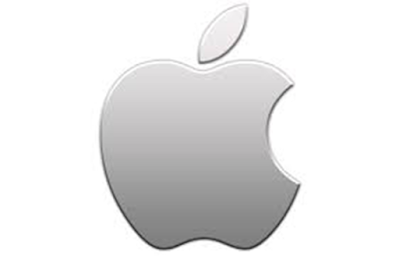I was getting old far before my time. Natural detox methods brought me back to health, and I am 100 percent confident that if you apply the methods I’ve outlined here, you will be well on your way to living in the body of your dreams – a body that feels great and looks fantastic.
From the first day of this detox forward, you’ll notice that the numbers on the scale decrease while your body shrinks and your clothing fits better than it may have in quite some time.
Besides dramatically improving your appearance, you’ll feel so energetic that people will wonder about the changes you made!
For many who were once just like you, these immediate, significant improvements in appearance and overall well-being result in a higher level of confidence that can lead to a whole new outlook on life. Red tea has helped me enjoy better health and greater vitality, and I sincerely hope that you share my experience.
So, what’s The Red Tea Detox? I created this program in response to the countless “mainstream” diet programs that do nothing more than cost money and time while delivering minimal results, if The Red Tea Detox INTRODUCTION 07 any. After reading well over 500 medical studies, poring over dozens of diet books, and reviewing hundreds of diets systems, programs, gadgets, pills, and potions, I created a brand-new program.
The Red Tea Detox is the result of more than a decade of research and almost three years of realworld testing. It’s not one of those fad diets that works well for some and not others; instead, it’s a complete program that works quickly, for everyone.
If you’ve ever found yourself falling asleep while trying to make your way through medical research and other dry, boring information found in some diet books, you can be sure that this experience won’t be repeated as you read The Red Tea Detox. I’ve broken down difficult concepts to make them easy for anyone to learn and apply, and to make it easy for everyone to enjoy success.
I started with a huge manuscript, and then I condensed it into as few pages as possible, so you get all the key information without any mind-boggling extras
 While I have done my best to create this book with no “fluff,” I feel it is extremely important to
explain the reasons behind the methods. Like many people, I have a tendency to skip ahead
and get to the actionable parts of different systems.
While I have done my best to create this book with no “fluff,” I feel it is extremely important to
explain the reasons behind the methods. Like many people, I have a tendency to skip ahead
and get to the actionable parts of different systems. You might not be surprised to learn that I don’t get the exact results when I do this, and you may wonder why. The answer is simple: I have a tendency to take what sounds good to me and ignore the parts that I don’t like or feel some resistance toward doing.
Please trust me when I say that you don’t want to repeat my mistakes, and please read the entire book so that you understand why the system works. Understanding the science makes it easier to follow the “rules,” and in turn, leads to dramatic weight loss.
The Red Tea Detox is broken down into three main components for easy reading, and to make it easy to refer back to information you’d like to review later if you like.
Diet: The diet portion of The Red Tea Detox is exactly that: the nuts and bolts of the eating program. It consists of four phases, each with radically different elements.
 For example,
during the first phase of the diet, you’re likely to see a weight loss that averages between
five to eight pounds.
For example,
during the first phase of the diet, you’re likely to see a weight loss that averages between
five to eight pounds. During the fourth phase, you’ll learn how to determine your BMR, plus you will learn how to use it to calculate the number of calories and amount of different nutrients you’ll need each day in order to meet your weight loss goals.
You will also learn how to time your meals to keep your metabolism high. Additionally, you’ll learn how to create a 24/7 fat-burning furnace inside your body. You’ll also learn how to balance your hormones to facilitate fat burning, and how to use optional supplements to dramatically boost your weight loss.
Exercise: While the diet portion of this book will help you melt body fat fast, a quality exercise routine has the potential to almost double your results.
Let me be clear: You can lose some weight without exercise, but it won’t happen quickly. Add movement into the equation and you’ll boost your metabolism. If you’re worried about the amount of time it takes to exercise, let me help you put your fears to rest.
Fat loss is driven by intensity, not time. With the Red Tea Detox, you’ll enjoy some serious fat-burning and body shaping workouts that take a mere 20 to 30 minutes daily. To put this into perspective, most people spend far more time than this on social media, mindlessly exercising their thumbs. You can do this!
Willpower, Motivation, and Mindset: Most people find the third section to be eye-opening because it dispels some of the most often-repeated, common myths about willpower and how those myths prevent many from reaching their goals successfully. It’s not only interesting, but it is a vital element of this plan.

As you read, you’ll power through your willpower challenges, and you’ll discover a whole host of easy-to-follow options which virtually guarantee your success on The Red Tea Detox as long as you follow through with your intent.
All in all, these pages you’re reading now are meant to help you strip off five, ten, fifteen, or maybe even twenty pounds of stubborn fat over a 14-day period. If you have more weight to lose, you’ll find that it’s very easy to repeat the cycle and use a variety of tricks contained in this book to keep your weight loss going until you reach your goal.
Inside these pages, you’ll find the keys to creating the body you’ve always wanted, because you can use these methods to become as lean and healthy as you want to be. Nothing is out of reach! Whether you’ve always wanted to develop “6-pack” abs, attain a super-lean, single-digit body fat percentage, or fit into clothing you’ve only dreamed about before, the information you’ll learn here helps make your dream possible.
The ultimate secrets for on-demand weight loss are all inside, along with sound methods for preventing the weight from returning, as so often happens with yo-yo diets. Follow the advice presented here to the letter, and you will completely transform your body while enjoying the lifestyle you want.
The suffering from embarrassment about your weight or your body shape will soon be replaced with enormous self-confidence and happiness, and best of all, you’ll enjoy a longer, far healthier life.









































